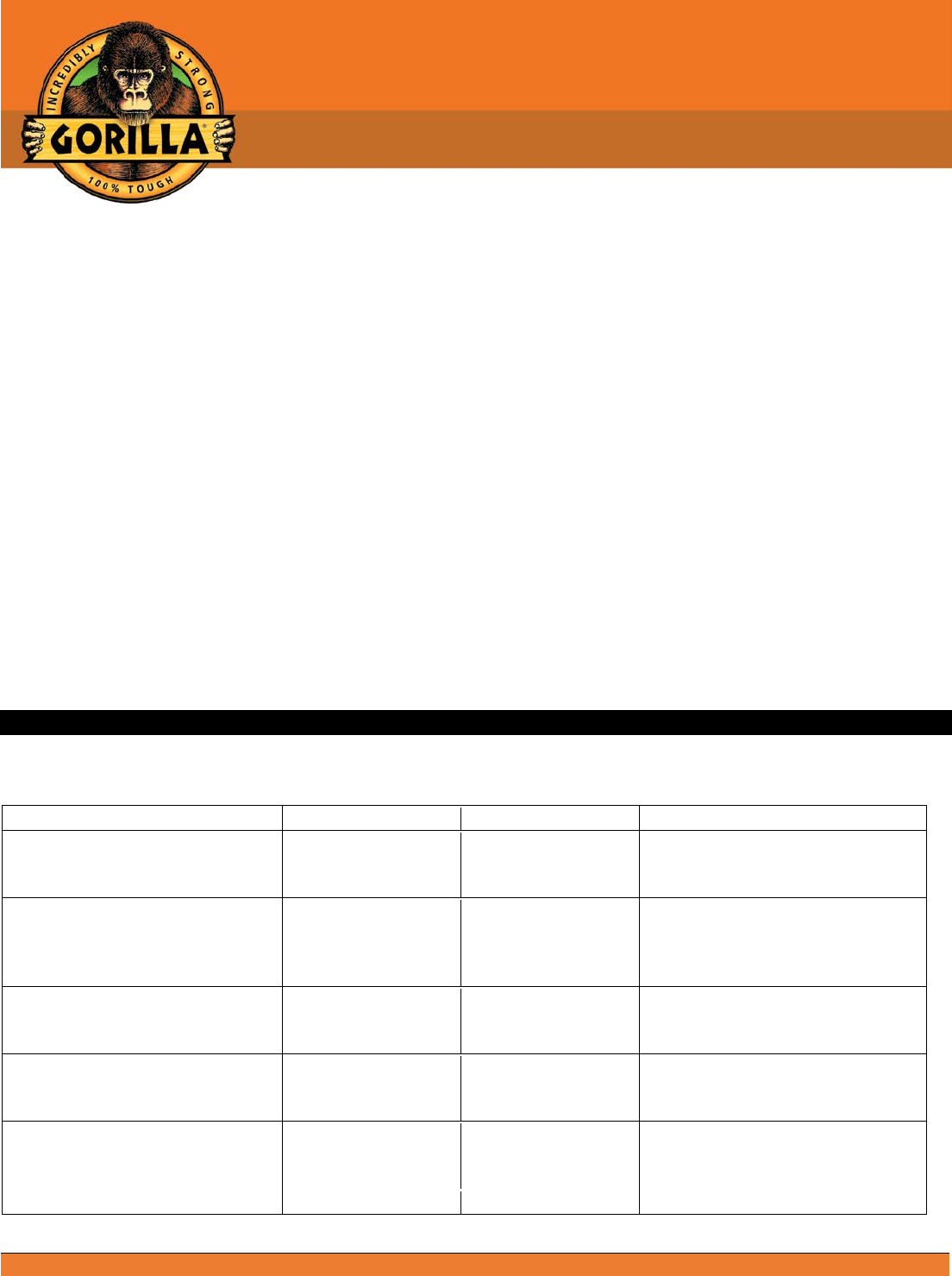SDS
Table Of Contents
- Intended Use of the Product Adhesive.
- Emergency Telephone Number
- Classification of the Substance or Mixture
- GHS-US Classification
- Label Elements
- GHS-US Labeling
- Other Hazards
- Unknown Acute Toxicity (GHS-US)
- Substance
- Mixture
- Description of First-aid Measures
- Most Important Symptoms and Effects Both Acute and Delayed
- Indication of Any Immediate Medical Attention and Special Treatment Needed
- Extinguishing Media
- Special Hazards Arising From the Substance or Mixture
- Advice for Firefighters
- Personal Precautions, Protective Equipment and Emergency Procedures
- For Non-Emergency Personnel
- Environmental Precautions
- Methods and Materials for Containment and Cleaning Up
- Reference to Other Sections
- Precautions for Safe Handling
- Specific End Use(s) No use is specified.
- Control Parameters
- Information on Basic Physical and Chemical Properties
- Information on Toxicological Effects
- Toxicity
- Persistence and Degradability
- Bioaccumulative Potential
- Mobility in Soil1T No additional information available
- 13.1. Waste Treatment Methods
- US Federal Regulations
- US State Regulations

Gorilla Spray Adhesive SDS Page 2 of 18
Safety Data Sheet – Gorilla Spray Adhesive
Date Revised: 02/28/2017
Date Issued: 02/28/2017
Version 1.0
FOR CHEMICAL EMERGENCY
DURING BUSINESS HOURS: (800) 966-3458 | OUTSIDE BUSINESS HOURS: (800) 420-7186
According to Federal Register / Vol. 77, No. 58 / Monday, March 26, 2012 / Rules and Regulations.
P302+P352 - If on skin: Wash with plenty of water.
P304+P340
- If inhaled: Remove person to fresh air and keep at rest in a position
comfortable for breathing.
P305+P351+P338
- If in eyes: Rinse cautiously with water for several minutes.
Remove contact lenses, if present and easy
to do. Continue rinsing.
P312
- Call a poison center or doctor if you feel unwell.
P321
- Specific treatment (see section 4 on this SDS).
P332+P313
- If skin irritation occurs: Get medical advice/attention.
P337+P313
- If eye irritation persists: Get medical advice/attention.
P362+P364
- Take off contaminated clothing and wash it before reuse.
P391
- Collect spillage.
P403+P233
- Store in a well-ventilated place. Keep container tightly closed.
P405
- Store locked up.
P410+P403
- Protect from sunlight. Store in a well-ventilated place.
P410+P412
- Protect from sunlight. Do not expose to temperatures exceeding 50
°C/122 °F.
P501
- Dispose of contents/container in accordance with local, regional, national,
and international regulations.
Other Hazards
Exposure may aggravate pre-existing eye, skin, or respiratory conditions. Contact with gas escaping the container can cause frostbite.
Unknown Acute Toxicity (GHS-US)
No data available
SECTION 3: COMPOSITION/INFORMATION ON INGREDIENTS
Substance
Not applicable
Mixture
Name
Product Identifier
%
GHS-US classification
Methyl acetate
(CAS No) 79-20-9
15-40
Flam. Liq. 2, H225
Eye Irrit. 2A, H319
STOT SE 3, H336
Cyclohexane
(CAS No) 110-82-7
5-15
Flam. Liq. 2, H225
Skin Irrit. 2, H315
STOT SE 3, H336
Asp. Tox. 1, H304
Acetone
(CAS No) 67-64-1
5-15
Flam. Liq. 2, H225
Eye Irrit. 2A, H319
STOT SE 3, H336
1,1-Difluoroethane
(CAS No) 75-37-6
5-15
Simple Asphy
Flam. Gas 1, H220
Liquefied gas, H280
Dimethyl ether
(CAS No) 115-10-6
5-15
Simple Asphy
Flam. Gas 1, H220
Liquefied gas, H280
Petroleum hydrocarbon resin
(CAS No) Proprietary
5-15
Eye Irrit. 2B, H320










